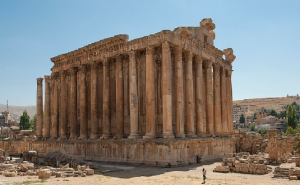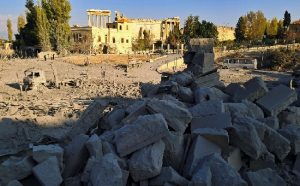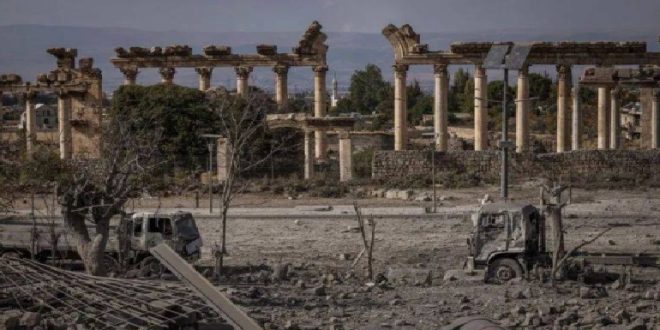10-11-2024
GAZA STRIP: For over two millennia, the Roman temples at Baalbek in eastern Lebanon have stood as some of the finest examples of Roman architecture anywhere in the world.
On Wednesday, a car park just metres away from the UNESCO World Heritage site was hit by an Israeli air strike.
 The attack, which also destroyed a centuries-old Ottoman building, highlighted what some archaeologists say is the risk of irreparable damage to historical sites across Lebanon from the current war between Israel and Hezbollah.
The attack, which also destroyed a centuries-old Ottoman building, highlighted what some archaeologists say is the risk of irreparable damage to historical sites across Lebanon from the current war between Israel and Hezbollah.
“Baalbek is the major Roman site in Lebanon. You couldn’t replace it if someone bombed it,” says Graham Philip, an archaeology professor at Durham University.
“It would be a huge loss. It would be a crime.”
Since late September, Israel has pummeled Lebanon with thousands of air strikes in an escalation of its campaign against Hezbollah, the Iran-backed group it has been fighting in nearly a year of cross-border strikes.
The Israel Defense Forces (IDF) has largely been targeting southern Lebanon, suburbs in the capital Beirut and the eastern Bekaa Valley but in the past fortnight, the campaign has moved into new areas, or rather, very old ground.
The IDF told media that it only targets military sites. But those targets are incredibly close to the Baalbek temples and Roman ruins in Tyre, a major port of the Phoenician Empire around 2,500 years ago.
According to legend, Tyre is the place where purple pigment was first created – the dye crushed out of snail shells to embroider royal robes.
On 23 October, the IDF issued evacuation orders for neighborhoods close to the city’s Roman ruins, including the remains of a necropolis and a hippodrome.
Hours later it began striking targets. More bombing of the sites was reported last week.
 Videos from the strikes showed huge clouds of black smoke rising from seafront areas only a few hundred metres from the ruins.
Videos from the strikes showed huge clouds of black smoke rising from seafront areas only a few hundred metres from the ruins.
There is no evidence that the Roman sites in Tyre and Baalbek have been damaged by the Israeli strikes but Lebanese archaeologists are alarmed at how close the fighting has been to the millennia-old ruins, recognized by UNESCO as having outstanding value to humanity.
“For Baalbek it was even worse than Tyre, because the temples are located within the area that is targeted and (the IDF) did not make any exemption for the temples,” says local archaeologist Joanne Farchakh Bajjaly.
She says there are no Hezbollah facilities at the Baalbek site: “No one knows what the excuse or the message behind the hit is.”
The IDF disputes this. In a statement, it told the BBC it targets military sites in accordance with strict protocol, adding that it is “aware of the existence of sensitive sites and this is taken into account and constitutes an essential part of the planning of strikes”.
“Each strike that poses a risk to a sensitive structure is weighed carefully and goes through a rigorous approval process as required.”
Some ordinary Lebanese attempting to escape Israeli bombing reportedly fled to the Baalbek ruins, judging that ancient sites would not be targeted by Israel and would therefore offer protection.
Farchakh Bajjaly says “those who didn’t have a car to flee” moved closer to the ruins, in the belief that the UNESCO sites are considered more valuable than their lives.
It prompted the local government to issue a warning urging people against travelling to the ruins. (Int’l News Desk)
 Pressmediaofindia
Pressmediaofindia




